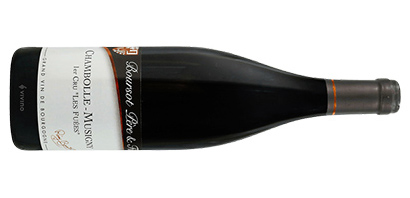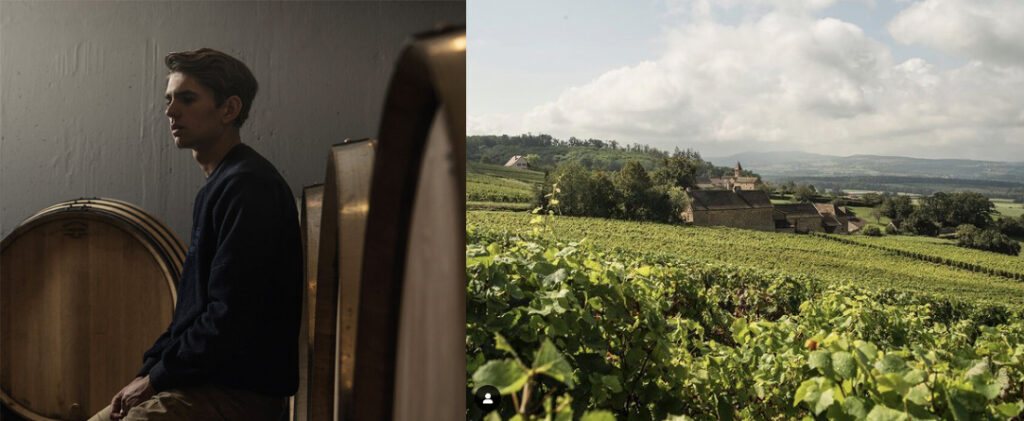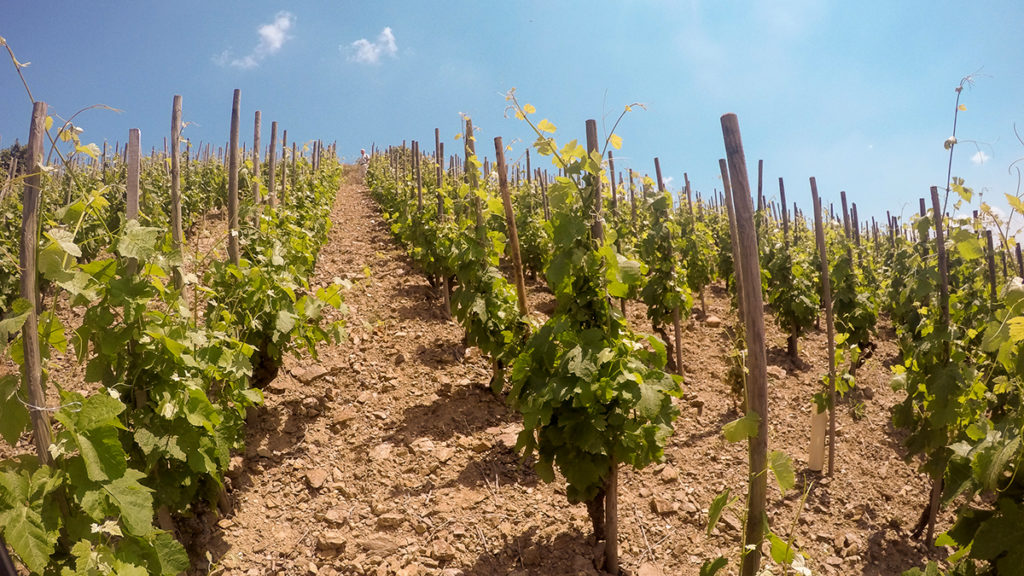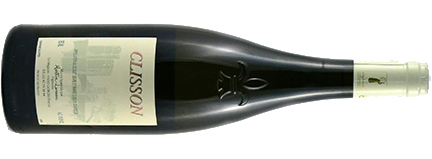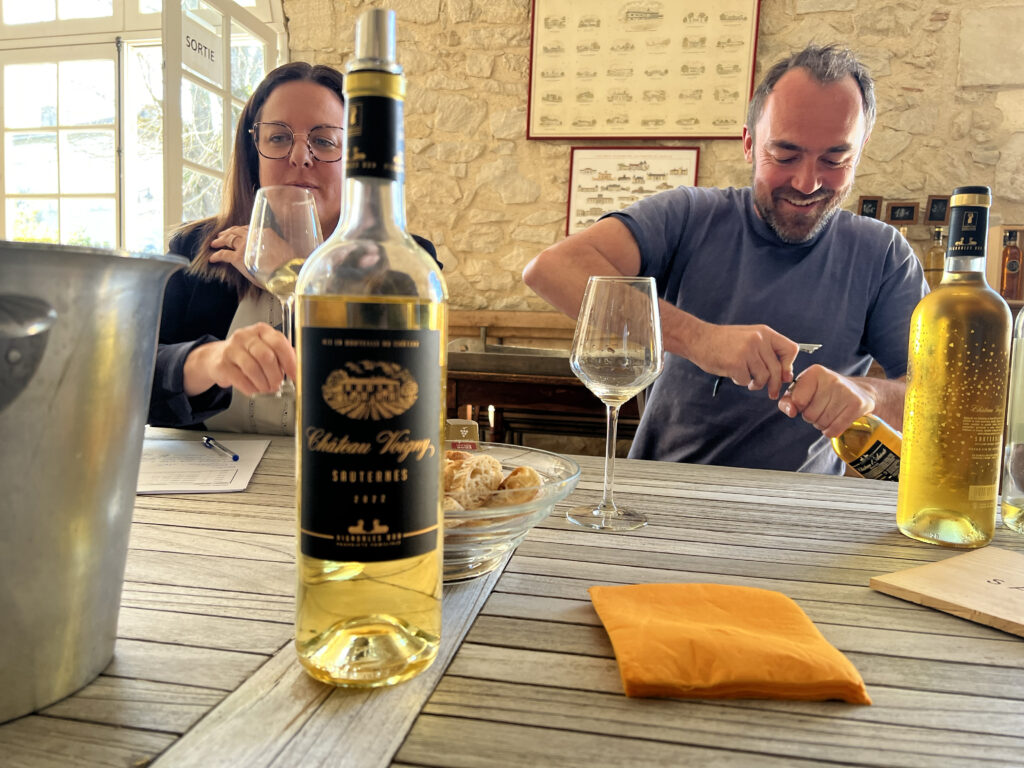As we write these notes, the harvest in Burgundy is slowly unfolding. It’s been devilishly hard for vignerons to decide when to pick this year. Unlike a year such as 2022, when ripening proceeded smoothly throughout the growing season, this year’s constant twists and turns have kept vignerons awake at night and in the vines all day. Very wet weather began shortly after budbreak and continued long into the summer. Such conditions translate into heavy pressure from mildiou, which means constant treatments, lost bunches and small berries. Indeed, overall production in Burgundy is likely to be lower than even 2021, whose historically low yields (that year from frost damage) amazed us as we tasted our way through largely empty barrel rooms as the wines completed their élevage. Fortunately for us, top producers these days sort their grapes so carefully that the impact of challenging weather doesn’t find its way into the bottles. Sad as we were with the tiny volume from the 2021 vintage, they have proved to be lovely and terroir-transparent in the glass, and we will miss them when they are drunk up. Let’s wish a similar result for the 2024s. Meanwhile, we still have the opportunity to stock up on the superb 2022s. In addition to more 2022 Burgundies, this offering includes a wide range of choices and prices. We debut an exciting new winemaker in Burgundy. There are exceptional wines in Condrieu and Côte Rôtie from the Northern Rhone, gulpable everyday wine from the Southern Rhône, attractive whites from both ends of the Loire, Champagne from a producer we know well, and a first opportunity to buy left bank Bordeaux from the 2022 vintage. As always, our goal is to propose wines for every taste and budget, and we hope you’ll find something of interest in this offering’s wide range of geography and prices. If you do, please be sure to submit your orders, in case or half-case lots, by the Order Deadline of Sunday, September 29, 2024. We will place orders for the wine immediately thereafter. Jump to Producer
Boursot
Baillot
Forces Telluriques
Bonnefond
Souverain
Paget
Martin-Luneau
Fleuron de Liot
Voigny
Bardoux
September Futures
Order Deadline: 9/29
Domaine Boursot
Chambolle-Musigny, Burgundy
Particularly in Burgundy, vintage plays an enormous role in the character of a wine. We’re right in the middle of our offerings of 2022 red Burgundies, a vintage that is quickly becoming a favorite here at Ansonia. Despite a year of extreme heat and dryness, the best wines of the vintage avoided the over-ripeness high-alcohol trap of 2018 and 2020 – they’re intense and bold but with low-alcohol (some in the 12%s!) and exquisite balance. Jancis Robinson writes of their “surprising freshness and elegance” with “thrilling energy;” Jasper Morris cites their “fine tannins and fresh acidity” with “excellent aging potential.” From their historic domaine in the center of Chambolle-Musigny, the Boursot brothers continue to produce delicious red Burgundies full of character and richness. As they hone their cellar techniques the wines have gained precision and finesse, but they retain the rugged, charming spirit that first brought us to this domaine. Romaric told us their 2022 growing season was just about perfect, with the wines exhibiting classical charm of old-school Burgundy but the intense concentration of modern sunny vintages. As with the best 2022s, the Boursots’ are rich and darkly colored but with impeccable balance. We have four cuvées to recommend, ranging from Bourgogne to old-vine Premier Cru. Boursot’s Bourgogne Côte d’Or is from vines near Chambolle-Musigny and Vosne-Romanée, and raised entirely in stainless steel. As you’d expect, it’s pure delightful fruit in the nose, with hints of chalk and spice, but not a whisper of oak. The Boursots have extracted this perfectly, and the tannins are fresh and friendly. It’s not refined or cellar-worthy, but at under $25 it doesn’t need to be – a startlingly good deal. Boursot’s newest cuvée is their Savigny-les-Beaune, a village that comes with less fame and a significant discount from the better known appellations. Savigny’s terroir naturally tends toward linear wines with tension and minerals, notes that play beautifully in a year of heat and drought. The Boursots use 25% amphora and 25% oak for this cuvée, and the result is a pleasant, fresh, extremely drinkable wine. The nose shows cherries and limestone, the mouth is floral and pleasant, with delicate tannins amid the deep inky fruit. Bill Nanson of the “Burgundy Report” writes “wide and perfumed…you might guess Chambolle…simply excellent.” Serve this with duck confit or a creamy chicken, and watch the wine slice effortlessly through the fat. Back home in Chambolle, the Boursots have turned in a terrific showing for their village-level Chambolle-Musigny. It’s a blend of three plots, and a combination of silky, lacey detail from the terroir and a deep intensity from the vintage. The nose is dark and brooding with notes of blackberry and fig; the mouth is intense and well structured with silky tannins surrounding a sleek, chiseled core. This will benefit from a few years in the cellar, and given the intensity we wouldn’t be surprised to see it go a decade with ease. Finally the Boursot family’s gem is their plot of 75+ year-old vines in “Les Fuées,” the Chambolle 1er cru abutting the iconic Bonne Mares Grand Cru. Planted by Romaric and Romault’s grandfather in the 1940s, the vines produce low yields of extremely intense, powerful wine. Add that to a famously rich terroir and a deep, concentrated vintage and you have the makings of seriously impressive wine. If the village wine will benefit from time, the Fuées will need it; but we expect a very bright future. The nose is inky and expansive, with rose petals, baking spices, dried flowers and cassis. The mouth is bold and muscled with remarkable length. “A very classy bottle – the finish is superb,” writes Bill Nanson. If you have cellar space and patience, this will make a great addition.
Arnaud Baillot
Beaune, Burgundy
We first met Arnaud Baillot where many great relationships have started – at a bar. This spring, as we enjoyed a terrific meal at La Superbe, a delicious new restaurant in Beaune, we struck up a conversation with the young couple a few seats down the counter. They explained they were local winemakers, we told them about our import business, and by the end of the night we had exchanged Instagram follows, with promises to remain in touch. Baillot is a bit of an anomaly in Burgundy – he has no family connection to wine or the region, and has only been making wine for six years. His wife Laure is of a storied Burgundian family (Hudelot-Noëllat), but they have short winemaking experience and almost zero reviews. Still, since a hidden gem is the perpetual pursuit of all importers, we squeezed an appointment in late in the afternoon of our final tasting day this spring. Volnay is an underrepresented down in our portfolio. The high limestone content in the soils delivers wines of finesse and grace, with soaring aromatics and terrific detail. Baillot has two Volnays, a village level red that’s a blend of several plots, and a premier cru from the excellent Mitans vineyard. We’re fortunate to be landing chez Boillot for the 2022 vintage – though we tasted some excellent 21s and 23s during our tasting, his 2022s are shining examples of a magnificent Burgundy vintage. Baillot’s 2022 Volnay is deep and floral with red fruits bursting from the glass alongside violets and cassis. It’s beautifully concentrated and perfectly defined, with a sleek, low-oak profile on the palate. Volnay is known for elegance, and this has it in spades, but there’s more concentration than we expected at the village level. This should age terrifically, but will be hard to keep your hands off in the coming year. The Volnay 1er cru Mitans 2022 is everything above but more so. Mitans is on the northern side of Volnay, near the Pommard border. It produces intense, concentrated wines full of compact fruit and character. Baillot’s is bold and beautiful, with beautiful spice elements in the nose (cinnamon, clove) alongside violets and cassis. As with all of Baillot’s wines, the oak is minimal and perfectly integrated. This will reward a few years’ patience beautifully. Before we left the tasting, Arnaud poured us tastes of his collaboration with Théo Dancer, winemaker at Domaine Vincent Dancer in Chassagne-Montrachet. Dancer has reached near cult status in Chassagne, and many consider him one of the best white Burgundy domaines operating anywhere. We at Ansonia have long loved Dancer wines (most often in Beaune restaurants where they are somewhat less rare and pricey), and have tracked Theo’s recent return to his father’s domaine. In addition to taking over the family estate, Theo has embarked on a new project in the Maconnais called Roc Breïa, with Baillot as one of his investors. Roc Breïa is a 10 hectare property in the Maconnais that Dancer began farming in 2021. The Pinot Noir vines are 35+ years old, and the Chardonnay averages over 60. William Kelley writes “an exciting new project…what the future holds is surely even more exciting: amounting to some 10 hectares, all in one single block, this site, in contrast with the morcellated holdings of the Côte de Beaune, is ideally suited to organic farming and agroforestry initiatives…this will be a project to follow closely.” Dancer has labeled both Vin de France (the national generic appellation), in an effort to make the wine an expression of sustainable viticulture and hands-off winemaking. Like his Chassagnes, it’s unfined and unfiltered, there is no new oak, and the wild-yeast fermentation takes place at a leisurely pace. We found both wines delightful. The 2022 Roc Breïa Blanc is floral and beautiful, with a sunny Maconnais complexion cut by fresh lemon zest and chalk. William Kelley writes the wine “bursts with aromas of pear, white flowers, bread dough and hazelnuts,” followed by a “fleshy palate with a satiny attack…and a saline finish.” The 2022 Roc Breïa Rouge is deep and charming, almost gamay-like in color, with a beautiful intensity that’s not the least bit harsh. Kelley found it “deep and muscular” with “plumy fruit and sweet spices” and “sweet, powdery tannins.” It’s perfectly balanced – Pinot Noir in pure, unadulterated form. Can a Vin de France really be worth $75? That depends, of course. The Roc Breïa 2022s are around $100 at other retailers, Dancer’s village level Chassagne is $250, and his premier crus exceed $500. The Roc Breïa pair is less about terroir and appellation, and more about viticulture and winemaking. It’s a chance to taste a superstar young winemaker’s work early on in a groundbreaking new project. Dancer is among the most exciting young winemakers working today, and in only the second vintage of this project he’s off to a terrific start. We’re lowering the minimum purchase to three to encourage experimentation, but there’s still not much to go around. If you’re even slightly interested, we think you’ll enjoy this – cover the label, close your eyes, and experience a master at work.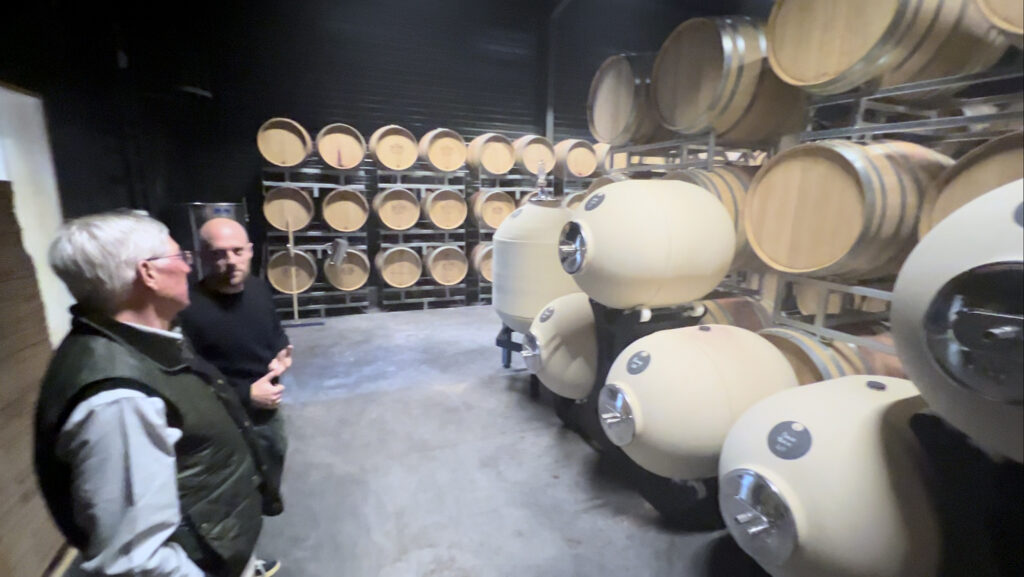
We’re certainly glad we did. Baillot is a talented, thoughtful winemaker with excellent instincts and impressive resources. He makes wine from a wide array of plots around the Côte d’Or, some farmed himself, some from carefully purchased grapes. The Bourgogne Côte d’Or from last Sunday’s post has sold out, but we’re pleased to offer two terrific reds from Volnay.
Forces-Telluriques
Viré-Clessé, Maconnais, Burgundy
In just a few years, this beautiful wine with the funny label has found a legion of loyal fans among our clients. Most of you already know the back story: during our sabbatical year in the French countryside a quarter-century ago, we were drawn to this domaine in the Maconnais hamlet of Quintaine by wine writer Anthony Hanson’s deft compliment in his seminal work Burgundy: “These wines are beautiful — they took my breath away. . . . One bottle, two glasses and a friend should be all you need.” For many years after our return from France we bought their wine as private buyers, but when we entered the wine business we stopped importing in deference to their relationship with a national importer of their brand. When we opened the last bottle of our first purchase there, some twenty-five years after its 1996 vintage, we penned a note of congratulations and learned that a private label might be a possibility. We are delighted to offer the wine today in that form, and though the label is unusual the wine is simply brilliant. This domaine was farming organically and biodynamically, using only indigenous yeasts, for many years before we discovered it. The vines are very old, and treated like family members. Today they average more than sixty years — the oldest are centenarians and the youngest are between 30 and 50. The winemaking facilities are clean enough to eat off the floor, and the producers’ meticulous attention to detail yields a wine whose purity of fruit is as great as we have seen. The principal Forces Telluriques cuvée is raised in enameled vats without any oak influence. The 2022 vintage is superb, round and full in the mouth yet offering memorable lemony freshness (the alcohol level is just 13%). There is plenty of complexity, as mineral notes join the fruit; and the wine persists on the palate beautifully. Jasper Morris writes: “deliciously floral…amazing how such a luxurious style of chardonnay can retain elegance.” This might well be the finest of the four vintages we have offered. As is often the case when a new generation joins in the winemaking, in recent years the domaine has experimented with micro-cuvées. We found two particularly interesting. First, a cuvée raised in amphora, which allows micro-oxygenation at a level similar to that from small oak barrels, but without the addition of oak flavors. The result is a more fully developed wine, a bit more rounded out but maintaining the freshness of that 13% alcohol level. (This wine will bear the same Forces Telluriques label, but with orange wax around the cork to distinguish it from the gray wax of the regular cuvée). Morris was even more enthusiastic about this one, giving it his 5/5 star award, and writing: “love the balance of this…pears not peaches, with excellent length.” Second, there is a cuvée from the oldest vines of the domaine. This one is raised in older 600 liter demi-muids, which also add micro-oxygenation. This blend develops beautiful complexity, adding salinity and an almost spicy element, all the while keeping the brightness and energy of the vintage. The producers recommend leaving this bottle at the back of the cellar for a few years.
Domaine Bonnefond
Côte Rôtie, Northern Rhône
Wine wisdom has long held that the greatest expression of any grape comes at the Northern limit of its range. The case can be made for this proposition concerning many vinifera grapes, but nowhere does it ring truer than with Syrah. Syrah grows happily across a wide range of latitudes, from the heat of Australian vineyards (where the wine is called Shiraz); to Spain, Provence and the Southern Rhône, where it co-stars with Grenache in Châteauneuf du Pape and other wines from the area; and finally at its northern limit in the Northern Rhône Valley, where all by itself it it makes the rare and great gems of Côte Rôtie, Cornas and Hermitage. Each of these appellations has its own character, with various levels of power on one hand and finesse on the other. Of the three, Côte Rôtie is most often praised for its subtlety, elegance and precision. Vinous’s Nicholas Greinacher put it well: “Seldom does Syrah produce wines of such elegance and detail as it does in Côte-Rôtie, evoking characteristics often associated with Pinot Noir. Usually medium-bodied at most and often red-fruited and hauntingly floral, these wines can dazzle with refinement and finesse.” The wines from the Domaine Patrick et Christophe Bonnefond embody these aspirations. For more than 20 years we have watched winemaker Christophe’s style evolve to emphasize more and more these special characteristics, and the term “dazzling” is often an apt description for his results. The 2022 vintage is excellent at the Bonnefond domaine. The 2022s are much more likely to reward keeping than the delightful but early-drinking 2021s; in fact, in concentration they are just a tick behind the full-throttle 2020s. The regular Côte Rôtie Cuvée “Colline de Couzou” is particularly impressive for its balance. There is plenty of freshness, but it supports beautifully ripe fruit with a fine mouthfeel with papery tannins and a silky finish. A mineral line joins in, adding slightly earthy notes like black olives; and the nose adds spice, black pepper, and floral overtones of violets. The two single vineyard cuvées are also excellent this year. “Côte Rozier,” which borders La Landonne, adds a note of toasty oak to the mix. It is denser than Couzou, and a bit quieter aromatically for the moment. Its tannins are ripe and very fine-grained, and as its elements melt together over the coming few years it should be quite special. This is always the most refined of Bonnefond’s cuvées, and given a few years in the bottle approaches Burgundian levels of finesse. “Les Rochins” is a sibling of Rozier. The same elements are in play, but its fruit is a bit darker than Rozier’s (the vineyard has a more southern exposure) and its oak seems more in the background to the rich fruit. The wine is denser than Rozier, and its texture is particularly nice in 2022. Look for notes of leather, cocoa, coffee and cloves in the nose. The mouth carries a remarkable balance of intense concentration and vibrant lift – a bit like the character of Burgundy’s best red 2022s. Both wines persist nicely on the palate, and both will need a bit more time than the regular cuvée before the wine really comes into its own. In recent years Christophe’s daughter Lea has become his partner in winemaking. She has crafted her own cuvée, “Dans les Vignes de Mon Père” (In My Father’s Vines), of grapes selected from Rochins and Rozier, and made with whole clusters. The wine has garnered much critical acclaim (Vinous’s Josh Raynolds awarded it 97 points!). It’s a bigger wine than either Rochins or Rozier, more extracted and dense, and will require even more patience before showing its best. But all of the elements are there, and maybe a few more: some clove and spice mixed in with the fruit, smoke, and minerals; and the wine has great length. The stems add a delicate bitterness that brings refinement and stamina. Down the road a few years, you can count on a very complex and interesting glass of wine. The vertiginous slopes on the banks of the Northern Rhône are also home to one of the world’s great white wines – Condrieu – and the Bonnefonds always produce a fine example. The grape is Viognier, once planted almost nowhere else but now widely planted around the world; and yet the quality of Condrieu greatly exceeds that of all other Viognier. The miniscule quantities made in the appellation have always kept prices up, and unlike the top whites of Burgundy, the wines are not made for long keeping. Condrieu is round and pleasant in the mouth, but really this wine is all about the aromatics. It is best enjoyed in a balloon glass like those for serving red Burgundy — and swirling in such a vessel produces gorgeous notes of ripe fruit: apricot, pineapple, white peach, and more. We think it’s best enjoyed as an apéritif. It is well known that Christophe Bonnefond makes Côte Rôtie and Condrieu of the first rank. Less well known is that he also produces one of the Northern Rhône’s best values with his IGP Syrah “Sensation du Nord.” Few of us have the budget to drink Côte Rôtie every day, and those who love his wines would be well advised to stock up on the 2023 Syrah as well. This wine trails the Côte Rôties in complexity and length, of course, but this Syrah from the humble regional appellation is simply delicious, offering a juicy and energetic glass with a glimpse of the pepper and black olive notes that make the top wines so compelling. It’s a fine match for all sorts of everyday menus, and you’ll be glad to have it available in your cellar. 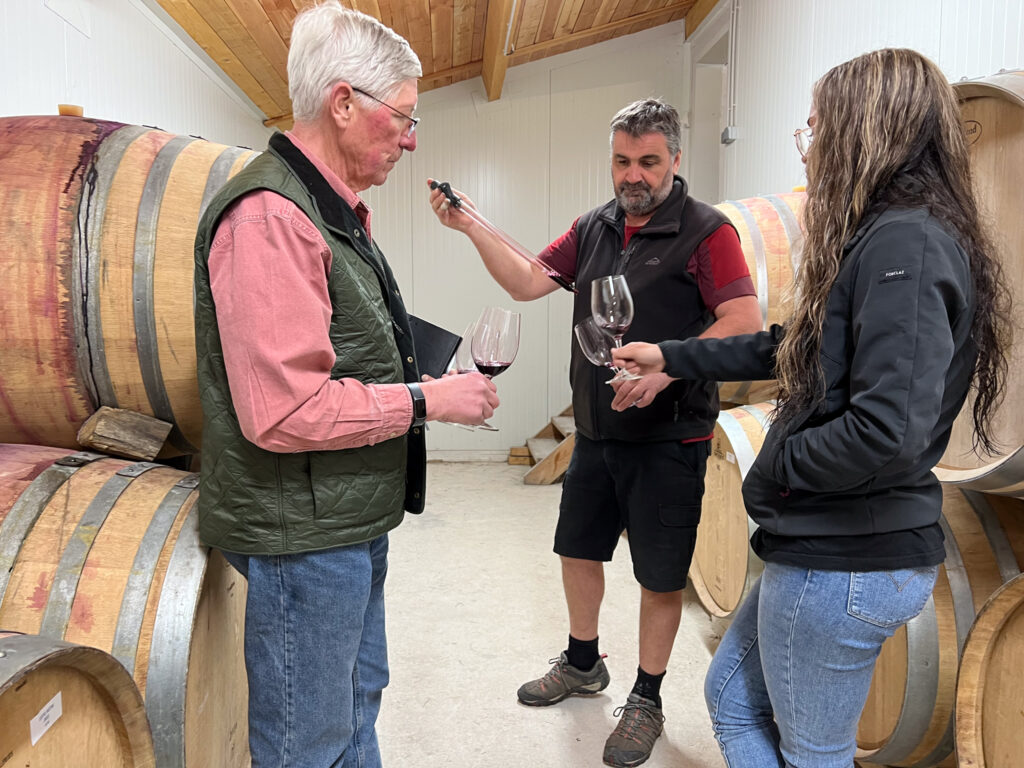
Domaine le Souverain
Séguret, Southern Rhône
Those who enjoy keeping Côtes du Rhône around the house should consider adding some of the Domaine Souverain’s Seguret “Classique” 2023 to the cellar. Though it is at the appellation level Côtes du Rhône Village, it is priced more like a generic Côtes du Rhône, with a Futures price under $200 per case. The 2023 vintage is delicious, winning Gold at the local Concours d’Orange in 2024, and one of the best vintages of this wine we’ve had. The nose suggests ripe plums, and the mouth is rich and full, with just enough ripe tannin to notice. The finish is very smooth. Souverain’s 2023 Seguret is one of those wines where the first glass calls for a second. If you’re looking for something to match the pizza you are making for tonight’s dinner, you can’t go wrong with this.
Nicolas Paget
Touraine-Azay le Rideau, Loire Valley
Nicolas Paget continues to produce excellent, dry, delicious Chenin Blanc from his organically farmed vineyard in the central Loire Valley. In his humble domaine not far from the Loire River, Paget makes a wide range of red, white, rosé and sparkling wines, all full of energy and life. We find chenin blanc marries particularly well with the earthy complexity that comes from organic farming, and both of Paget’s whites this year are terrific. First the “Melodie,” a pure chenin blanc cuvée raised in stainless steel. The 2022 is beautiful, a bright, pleasant, floral nose with earthy notes alongside white flowers, pear, and acacia. The mouth is smooth and full, and at 13% alcohol it’s beautifully balanced, but with a delicious waxy texture that will make it sing as an aperitif. Pair with a plate of sushi or nothing at all. Paget’s Chinon blanc 2021 is also made from Chenin blanc, this one raised in large barrels. The oak is deftly handled, and you might not even notice it if you didn’t know what to look for. It’s deeper in the nose than the Melodie – think gardenia and rose – but with the same pretty pear fruit. As a 2021 this is drier than last year’s, and we think more sophisticated and impressive. There’s a savory grape-skin minerality to the wine that gives a mouthwatering texture reminiscent of Chablis. It’s a classy wine that should pair well with rich autumn foods – a lobster bisque, a bouillabaisse, a plate of raclette.
Domaine Martin-Luneau
Muscadet, Loire Valley
Perched where the Loire river meets the windswept Atlantic coast, Muscadet has long been a source for a classic, dry white wine. Served by the carafe in the oyster bars of Paris and London for decades, it’s refreshing, abundant, and inexpensive — a perfect glass to wash down a plate of crustaceans. In the last few decades Muscadet has undergone a reinvention of sorts with the elevation of three of the region’s best towns to a new “Cru Communal” status. Our source here is Martin-Luneau, a fourth generation family domaine farming old vines on the plains south of Nantes. Combining excellent terroir with extended years on the lees, their wines offer an unusually complex take on a classic. Muscadet is a surprisingly good ager – it starts dry and gets drier – and we’re pleased to re-offer Martin-Luneau’s 2020 Clisson. It’s a marriage of the brisk, refreshing essence of the sea, with the delicate herbal and fruit flavors of western France. The nose is clean and pure, showing dried flowers, melons, and lemon. The mouth is smooth and very dry, with notes of stones, salt air, and apple skins. Oysters are the longstanding pairing of choice with Muscadet, and the thick savoriness in this wine is an exceptional foil for the fresh brinyness of an oyster. Otherwise moules marinières or goat cheese on crackers will do.
Fleuron de LIot
St-Estèphe, Bordeaux
St. Estephe is home to storied left bank chateaux that were ranked in the Classification of 1855, so it’s rare to be tasting wine from the appellation whose producer came into existence just thirty years ago. Henri Negrier worked as a winemaker among the vineyards of the Haut Médoc for decades until he got a rare opportunity to buy his own vines, creating Chateau Moulin de Blanchon of the Haut Médoc and Fleuron de Liot of St. Estephe. His winemaking has drawn praise – the blind-tasting based Guide Hachette awarded Moulin de Blanchon a Coup de Coeur for the 2020 vintage. The wines are principally a blend of Cabernet Sauvignon and Merlot; and beginning in 2019 Negrier began adding a dollop of Petit Verdot for a touch of pepper and enhanced color. We have been happily buying Fleuron de Liot since the 2014 vintage, but we never got a chance to meet the Negriers until we visited Bordeaux last Spring. Tasting the wine across a number of vintages confirmed our confidence in its quality, and we learned that Negrier considers the 2022 to be the best of his thirty vintages. He attributes this partly to the very dry growing season, which also featured damaging hail early, at the cost of 40% of the crop. The result: tiny grapes and highly concentrated must. Indeed, the Fleuron de Liot 2022 is delicious and should age very well. Right now this well-balanced wine is inky and dark, showing black cherry and cassis fruit. There is excellent density: the fine tannins coat the mouth and persist on the palate. In just a few years it will knit together and provide excellent drinking for many more. Don’t let the bargain pricing fool you; this is serious, impressive left-bank Bordeaux.
Chateau Voigny
Sauternes, Bordeaux
There are few wines quite like Sauternes. If you walked by the vines just before the harvest you might imagine that the grapes had been forgotten and left to rot in the vineyard. But the moldiness is intentional, the work of botrytis cinerea, the “noble rot” that is essential to a successful Sauternes’ honeyed, elegant taste. The mold draws moisture from the grapes, leaving behind concentrated sugars, acids, and other elements. The juice is carefully pressed off the skins and slowly fermented, leaving a sweet and unctuous wine with strikingly refined flavors. The development of botrytis is encouraged by the mists that waft up from the Garonne River (one of two that flow into the Gironde estuary) as the harvest nears. Our producer of this remarkable wine, the Chateau Voigny, lies just a few yards up the bank from the Garonne, and so reliably produces classic Sauternes in almost every year. Sauternes is one of the world’s iconic wines, a favorite of kings and presidents throughout history; but Voigny’s terrific pricing, we hasten to say, brings this fabled dessert wine within everyone’s reach. On offer this year is the 2022, which has a fresh nose of yellow fruits and white flowers. The mouth is long and beautiful, with notes of pineapple, orange, pear, and spices. The botrytis notes – some combination of ginger, toffee, and saffron – are well integrated and play a co-starring role to the exotic fruit, rather than dominating it. There are a few classic pairings for Sauternes, one for each end of the meal. As a first course, pair it with foie gras mi-cuit, whose rich fat is cut by the acids that keep Sauternes from being cloyingly sweet. As a late course, try Roquefort or a similar cheese like Fourme d’Ambert, whose salt and fat pair beautifully with this wine. We usually stock Chateau Voigny in half-bottles because it is rarely consumed across an entire meal. We predict, though, that if you put some in your cellar you will be surprised how often a small glass seems just the thing, whether to start an elegant meal or to finish one.
Pascal Bardoux
Montagne-de-Reims, Champagne
As Pascal Bardoux nears retirement, we’re glad to have continued access to his delicious array of approachable, idiosyncratic Champagnes. More than perhaps any other of our Champagne sources, this is wine first, sparkling second. We’re offering four cuvées this year, including a revisit of his 18 year-old magnums. First up, old faithful – no Champagne has been more popular (or more useful) over the years than Bardoux’s Brut Traditionnel NV. This non-vintage cuvée is a blend of 60% Pinot Meunier, 30% Chardonnay and 10% Pinot Noir. It has the complexity and depth to match the finest bottles from Burgundy or Bordeaux. The nose shows plum, chalk, lime zest, and buttered biscuits; the mouth is dry, elegant, and smooth, with notes of apple and toast. Serve this with anything or nothing, for a special occasion or an ordinary Thursday afternoon. Pascal also holds some of his Traditionnel cuvée back on the lees, and it’s from this he releases his “Reserve” cuvée – it’s technically non-vintage, but this year’s comes mostly from the 2014 vintage, so he calls it “Reserve 2014.” Champagne undergoes two fermentations – a first in tanks (like any other wine), and then a second in bottle under bottlecap. During the second fermentation, the yeast in the bottle consumes the remaining sugar, releasing CO2 and producing the sparkle. After the second fermentation is complete, the winemaker may choose to disgorge (remove yeast and insert a cork) promptly, or hold for longer “on the lees.” These extra years on the lees add depth and a doughy, brioche quality to the wine, making it resemble a vintage Champagne. We think this wine is an excellent value, and if your taste runs toward yeasty bubbles, here’s a cuvée for you. Pascal’s Rosé Champagne is two thirds Pinot Meunier and Pinot Noir, and one third Chardonnay. The two dark grapes give gorgeous dry fruit (and color), and the Chardonnay adds freshness and length. This cuvée sits on the lees for three years before disgorgement; with only 150 cases made each year. The nose is intense and fresh, with strawberries, crème brûlée, and apple pie. The mouth is crisp and dry but full of springy fruit; wild cherries and roses. Drink this on its own, and not too far below room temperature. Let it develop in the glass. If a pairing is required, try Brillat Savarin or gougères. Finally we’re digging into Pascal’s cellar for an offer of 2006 Champagne Millesimé magnums. From a terrific vintage, these magnums have awaited disgorgement for nearly two decades. The blend is 20% Pinot Meunier, 30% Pinot Noir, and 50% Chardonnay, with an 8g/L dosage. The nose is terrific, with woodsy, savory notes alongside the pear fruit. The mouth is chalky and fine, with an astonishing level of vibrancy for its age. Look for notes of rhubarb, cooked apples and raspberry across a beautifully textured palate. You may need a (small) crowd to justify opening one of these, but you won’t need to work hard to finish it. 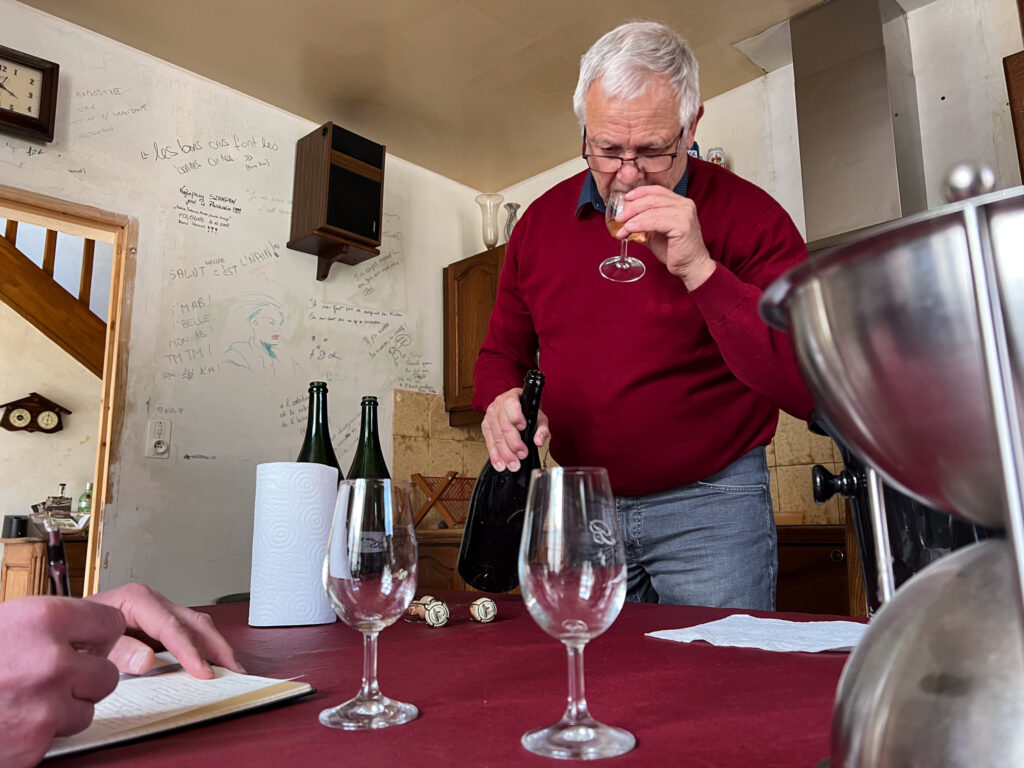
We expect these wines in November/December 2024. If you have any trouble submitting the new order form, you can always email us your order. Or give us a call with questions: 617-249-3657, or tom@ansoniawines.com The deadline to place orders for this issue is: SUNDAY, SEPTEMBER 29. Questions? Need advice? Call us: (617) 249-3657. OPTIONS FOR GETTING YOUR ORDERS Pick-up near Philadelphia. We’re pleased to restart our PA pickup option. Wines ordered for PA pickup will be available in the fall, depending on temperatures. Email us for more details. Shipping elsewhere. In most states we can arrange for shipping at an additional cost that varies by location ($3.50 per bottle to the addresses west of Chicago; $2.50 per bottle east of Chicago). If shipping interests you, let us know the state and we will figure out if it can be done.
Pick-up in Massachusetts. We store our inventory at our new warehouse in Newton: 12 Hawthorn St, Newton MA 02458. Futures customers can pick up their orders here during Saturday open hours, or by appointment.



